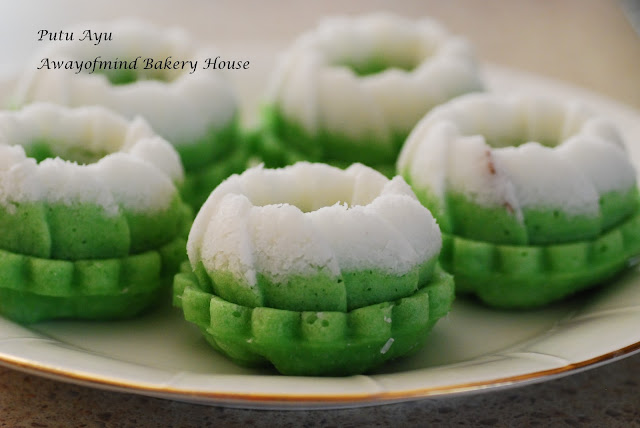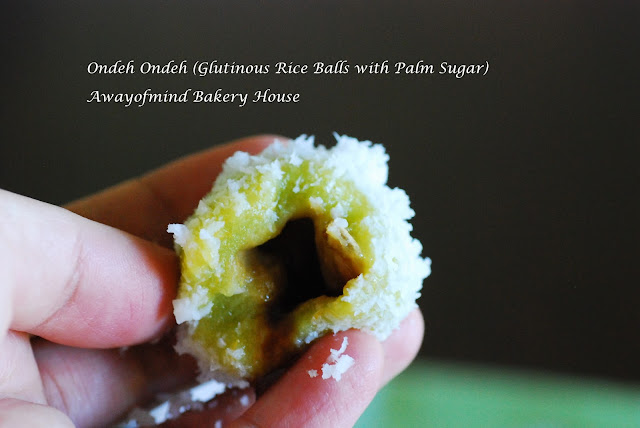4th attempt, a tall cheesecake but the top peeled when I tried to flip the cake
I'm challenging myself to bake a perfect Japanese Cotton Cheesecake with that soft, light and cottony cream cheese texture, perfect smooth top and side of the cake... however, this challenge seems not easy to take on. This post is to record and share my attempts on baking the Japanese Cotton Cheesecake, hopefully when you take on this challenge it will be a bit easier for you, of course you have to test your own oven to get the prefect result.
Most of the recipes on the Internet seems similar, however, some people spelled out differently how they prepared the baking tin, what type of baking tin they used and the various oven temperature they set for their cheesecake...all these are important. I personally had tried many ways too, total of five attempts so far, and I find the perfect smooth cake top is the one very hard to achieve. Overall, the cheesecake texture from all my attempts were good except the 3rd attempt.
My first attempt:
I used 8 inch black round springform cake pan, oven temperature set as 160C, greased and lined the side and bottom as the recipe didn't tell me not to use black baking tin and the recipe said baked at 200C then lower temperature to 160C. So even I baked at 160C, I ended with my cake cracked on the top, of course the side of the cake is not the perfect smooth too.
second attempt:
I used black oval one piece baking tin, oven temperature set as 160C, greased and floured the side and bottom of the baking tin. My cake ended with ugly wrinkle on the side, the cake shrank and created wrinkle on the top too.
3rd attempt:
I used 8" aluminium springform cake pan as shown in a video recipe, I wrapped the baking tin with double layers of aluminium foil, oven temperature set as 150C, lined the bottom of baking tin, greased and coated the side with sugar. It was a big mistake to buy that special springform cake pan, it leak! The cake batter created folds in the middle of the cake, and the side ended with sticky look because of the sugar! This cake texture was not good as the bottom layer was too dense.
4th attempt:
I used 7" aluminium square tin, wrapped the baking tin with aluminium foil, the egg whites was beat until soft peak just before stiff peak, as the recipe has spelled out clearly to beat to soft peak or just about stiff peak (not stiff peak), Don't under beat the egg whites as this is crucial for a soft, light and cottony cheesecake texture. Or else your cheesecake will end with a dense texture. I baked with top and bottom heat, without fan mode.
I baked this cake with oven temperature set as 140C. Baking time 1 hour 25 mins. The cake sit in the oven with oven door ajar for 45 mins after baking. It was a perfect cake with no crack and no fold or wrinkle on the cake top. After baking it shrank about 1 inch, still a pretty high cake with smooth top. However, the problem happened when I need to flip the cake out from the tin. The cake top stick on my flat plate, it peeled the beautiful top.
5th attempt:
I used 8" aluminium square tin, wrapped the baking tin with aluminium foil, the egg whites was beat until soft peak just before the stiff peak, oven temperature set as 140C, baked with top and bottom heat, without fan mode, baking time 1 hour 30 mins. The cake sit in the oven with oven door ajar for 45 mins after baking.
This cake ended with a bit folds in the middle of the cake top, I noticed there were bubbles coming out from the tin to the water bath during baking, not sure what really happened. The cake looks a bit over baked before cutting, but the cake texture is soft, light and cottony.
So what have I learnt here for my future attempt?
1. An oven thermometer is a must for baking Japanese Cotton Cheesecake, you need to adjust the oven temperature if the oven is too hot. 140C is the oven temperature for me for this baking. If cracks happen on cake, you need to lower the temperature. However, bear in mind that if the oven temperature is too low, it will not be able to bake the cake probably, you will end up with very dense cake texture instead of the soft, light and cottony cream cheese texture.
2. Bake with top and bottom heat, without fan mode.
3. Use 7" tin if you prefer a tall cake.
4. One piece cake tin is good. As the tin needs to sit in the water bath.
5. Egg whites has to beat until soft peak and just about to turn stiff peak.
6. Water bath is using hot water.
7. Over bake a bit is ok and good for this cheesecake. Never under bake the cake, it will cause the cake to collapse and shrink very fast once you switch off the heat.
7. Over bake a bit is ok and good for this cheesecake. Never under bake the cake, it will cause the cake to collapse and shrink very fast once you switch off the heat.
8. last and most importantly....stick with the perfect cake pan!! oh my...I'm the mischievous one, always try out new baking tin!
So after used up 1250g cream cheesecake, do I dare to take up this challenge again? The answer is a sure yes.
4th attempt shrank a bit after cooling down, using 7 inch square pan
5th attempt, no crack on the top. However, I don't like the height of this cake, using 8 inch square pan.
5th attempt
5th attempt
photos on 1st to 4th attempts
egg yolks batter
250g cream cheese
6 egg yolks
70g sugar
60g butter
100ml full cream milk
1 tbsp lemon juice
60g cake flour
20g corn flour
1/4 tsp salt
2 tsp vanilla extract
egg whites batter
6 egg whites
70g sugar
Method:
1. Prepare the baking tin: Grease the 8 inch aluminium square baking tin (7 inch if you prefer a taller cake), line the bottom of the tin with parchment paper.
2. In a big bowl, melt the cream cheese, butter and sugar on a double boiler. Whip the mixture using a hand whisk until it is creamy and smooth. Remove from the double boiler, add egg yolks, continue to whisk the mixture. Add milk, vanilla extract, lemon juice. Gently add the sifted flour mixture (cake flour, corn flour and salt) Sieve the egg yolks mixture and set aside.
3. In a clean mixing bowl, using electric mixer, whisk the egg whites until it is foamy, add in the sugar in three batches. Beat the egg whites until soft peak just before the stiff peak.
4. Take 1/3 of the egg whites mixture, mix it to the egg yolks mixture. Then fold in remaining egg whites mixture to the egg yolks mixture in two batches. Pour the batter into the baking tin, knock the baking tin on the worktop once to release air bubbles.
5. Pour hot water on a bigger baking tray and let the 8 inch baking tin sit in the hot water. Bake the cake in a preheated oven (top and bottom heat, without fan mode) at 140C for 1 hour 30 mins, in the lower rack of the oven. Remember to place an oven thermometer in the oven to check the actual oven temperature, adjust the heat accordingly.
6. After the cake is done, switch off the oven heat and let the cake sit in the oven with oven door ajar for 45 mins. Take out the cake from the oven and flip the cake out using a silicon mat to prevent the cake top stick and peel. (Thanks to a friend for the tip!)
7. Cool down the cake completely before slicing.



























